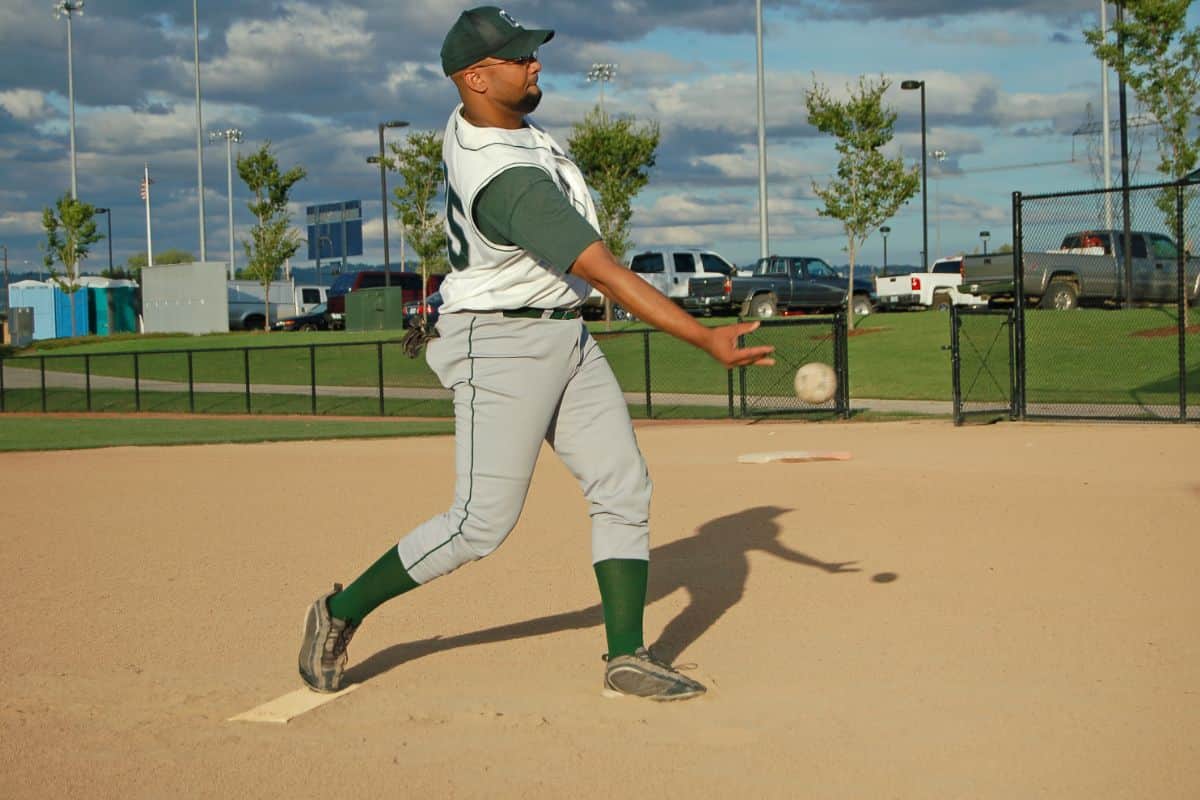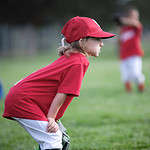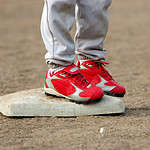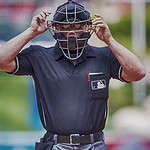A slider is a pitch in baseball that is thrown with a sideways spin, causing it to break sharply as it approaches the batter. It is a popular pitch among pitchers due to its ability to deceive batters and induce swings and misses or weak contact. The slider is often considered a breaking ball, along with the curveball and the knuckleball.
The slider is typically thrown with a fastball grip, but with the pitcher’s fingers positioned slightly off-center on the ball to create the spinning motion. The result is a pitch that appears to be a fastball until it breaks suddenly, often causing the batter to swing early or miss entirely. The slider is often used as a strikeout pitch, but can also be thrown for a called strike or as a pitch to induce weak contact.
Overall, the slider is a valuable weapon in a pitcher’s arsenal and can be a difficult pitch for batters to handle. Its effectiveness relies on the pitcher’s ability to control the break and location of the pitch, as well as the batter’s ability to recognize and react to the pitch.

What is a Slider in Baseball?
Definition
A slider is a type of pitch in baseball that is classified as a breaking ball. It is thrown with a lateral spin, which causes it to break away from the batter’s bat as it approaches the plate. The slider is known for its sharp, late-breaking movement that makes it difficult for batters to hit.
Movement
The slider is thrown with a lateral spin that causes it to break away from the batter. This lateral movement is what sets the slider apart from other pitches, such as fastballs and sinkers, which have more vertical movement. The slider’s movement is deceptive and can fool batters into swinging too early or too late.
Grip
To throw a slider, the pitcher grips the ball with their index and middle fingers along the seams, with the thumb underneath the ball and the other two fingers resting on top. The grip is similar to that of a cutter, but with more pressure on the middle finger.
Variations
There are several variations of the slider, including the nickel curve, slurve, and gyro slider. Each variation has its own unique movement and grip. The nickel curve, for example, is thrown with a tighter grip and has a sharper break than a traditional slider. The slurve is a hybrid pitch that combines the movement of a slider with the speed of a curveball.
In conclusion, the slider is a deceptive breaking pitch that is difficult for batters to hit. It’s lateral movement and sharp break make it a popular pitch among pitchers at all levels of the game. By mastering the slider grip and variations, pitchers can add an effective offspeed pitch to their arsenal and keep batters guessing at the plate.
History of the Slider
Origin
The slider is a pitch that has been used in baseball for over a century. Its origin is attributed to Charles Albert Bender, a Hall of Fame pitcher who played from 1903 to 1917. Bender, who was of Ojibwe descent, developed the pitch as a variation of his fastball. He would grip the ball tightly and throw it with a sharp wrist snap, causing it to break away from right-handed batters.
The slider gained popularity in the 1950s and 1960s, particularly among right-handed pitchers. Bob Gibson, Steve Carlton, and George Blaeholder were among the pitchers who used the slider to great effect during this era. The pitch continued to evolve, with pitchers experimenting with different grips and arm angles to achieve different types of movement.
Hall of Famers
Many Hall of Fame pitchers have used the slider as one of their primary pitches. One of the most notable is Randy Johnson, who used his slider to complement his overpowering fastball. Johnson won five Cy Young Awards and is considered one of the greatest left-handed pitchers of all time.
Another Hall of Famer who relied heavily on the slider was John Smoltz. Smoltz, who pitched for the Atlanta Braves for much of his career, used the pitch to great effect as both a starter and a relief pitcher. He was also known for his cut fastball, which he used to devastating effect against right-handed batters.
Other Hall of Fame pitchers who used the slider include Clayton Kershaw, Mariano Rivera, David Cone, and many more. The pitch has become a staple of modern pitching, with many pitchers using it as a go-to pitch in their repertoire.
In conclusion, the slider is a pitch with a rich history in baseball. It has been used by some of the greatest pitchers of all time and continues to be a valuable tool for modern pitchers.
Slider vs. Other Pitches
Fastball
A fastball is a pitch that is thrown with maximum velocity and minimal spin. It is the simplest and most common pitch in baseball. A fastball is typically thrown with a four-seam grip, which allows the ball to travel straight and fast through the air. The velocity of a fastball can range from the low 90s to over 100 miles per hour.
Curveball
A curveball is a pitch that is thrown with a lot of spin and has a sharp downward movement. It is typically thrown with a two-finger grip, which allows the pitcher to impart a lot of spin on the ball. The spin causes the ball to break downward as it approaches the plate. The velocity of a curveball is typically slower than that of a fastball, usually ranging from the mid-70s to the low 80s.
Changeup
A changeup is a pitch that is designed to look like a fastball but is thrown with significantly less velocity. It is typically thrown with the same grip as a fastball, but with a slower arm motion. The changeup is effective because it disrupts the timing of the batter, who is expecting a fastball. The velocity of a changeup is typically 10-15 miles per hour slower than that of a fastball.

Slider
A slider is a pitch that is thrown with a combination of velocity and spin. It is typically thrown with a grip that is similar to a curveball but with a tighter spin. The spin causes the ball to break laterally as it approaches the plate. The velocity of a slider is typically slower than that of a fastball but faster than that of a curveball, usually ranging from the mid-80s to the low 90s.
When comparing the slider to other pitches, it is important to note that the slider has a unique combination of velocity and movement. Unlike the curveball, which breaks downward, the slider breaks laterally. And unlike the changeup, which is thrown with significantly less velocity, the slider is still a relatively fast pitch. The slider is also more difficult to hit than a fastball due to its movement but easier to control than a curveball due to its tighter spin.
Overall, the slider is a versatile pitch that can be used in a variety of situations. It is particularly effective against right-handed batters, who are more susceptible to its movement. However, it is important for pitchers to use the slider sparingly, as overuse can lead to injury.
How to Throw a Slider
Grip
The grip for a slider is similar to a cutter but with a twist. First, start with a four-seam fastball grip, placing your index and middle fingers on the horseshoe of the ball. Then, shift your grip so that your middle finger is slightly off-center, applying more pressure on the inner seams of the ball. This off-center grip will create side spin on the ball, causing it to break away from the pitcher’s arm side.
Mechanics
To throw a slider, pitchers should use a similar arm motion to a fastball, but with a few key differences. Start with your normal windup or stretch, and as you release the ball, snap your wrist and fingers down and to the side. This motion will create the necessary side spin to produce a sharp break on the pitch.
It’s important to note that the slider should be thrown with the same arm speed as a fastball, as any change in velocity will tip off the batter. Additionally, pitchers should aim to release the ball at the same point as their fastball, to maintain consistency in their delivery.
Conclusion
The slider is a versatile pitch that can be used to deceive batters and keep them off balance. With the right grip and mechanics, any pitcher can add this breaking ball to their arsenal. Remember to practice regularly and focus on maintaining proper form to achieve the best results.
- UCLA Softball: Let’s Go Bruins! - February 12, 2024
- Youth Softball Helmet Buying Guide: Keep ‘Em Safe - February 12, 2024
- Youth Softball Pants: Our Top Picks for Your Top Player - February 12, 2024








